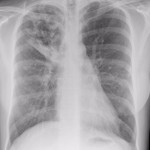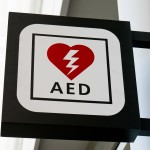I'm still traveling, but back in the swing of writing posts on the numerous changes to DSM-5 the Diagnostic and Statistical Manual of Mental Disorders, that is supposed to be published (finally) in May of 2013. I've been reading background material, papers with advance critiques and older criteria for some of the diagnoses.
I still can't add photos as I'll be using my iPad until I get home four days from now, so I'll give you a URL or two and some titles you can Google.
I'll start with mentioning a long, multi-part fascinating paper that is appearing in 'Philosophy, Ethics and Humanities in Medicine'. It's called "The six most essential questions in psychiatric diagnosis: a pleuralogue." The second author, Allen Frances, a Duke School of Medicine Emeritus Professor of Psychiatry, was the leader of the group that put together DSM-IV. I'll come back to these articles in a later post, but used the first one to find short commentaries on DSM-5.
The lead author, Dr. James Phillips, is an Associate Clinical Professor of Psychiatry at Yale. In November, 2011 he wrote an article for 'Psychiatric Times,' titled "The Great DSM-5 Personality Bazaar," and in March of 2012, in the same publication, a piece titled "DSM-5 In the Homestretch--1. Integrating the Coding Systems."
That first piece told of diagnoses, e.g., narcissistic personality disorder, that were excluded in drafts of the new manual and later re-included. The total number of Personality Disorders ended up at six, down from ten, at the time Dr. Phillips wrote his commentary.
One category that was removed was Paranoid Personality Disorder. It seemed worthy of inclusion to Phillips, certainly as much so as another that was kept. Personality Disorder NOS (not otherwise specified), was apparently changed to Personality Disorder Trait Specified (PDTS), which to me at least is a potentially confusing acronym. There is PTSD after all, a term most of us have some familiarity with.
Dr. Mark Zimmerman et al. published a study of 2,150 psychiatric outpatients (you can find it at www.ncbi.nim.nih.gov/pubmed/21903031) which said that DSM-IV's method, using three trait categories: absent, sub threshold or present, was just as effective as the proposed diagnostic approach of DSM-5.
Dr. Phillips, in his later article, mentioned coding, how to relate the International Classification of Diseases (ICD) with the DSM, often for billing purposes. Our country has a treaty obligation to use the ICD and at present is using a "clinical modification" of the 1978 ICD-9 version. Some diagnoses used by US mental health (MH) therapists aren't in the ICD at all and the new American version of the international coding system, ICD-10CM, originally supposed to be available in October 2013, has been delayed. Of course the rest of the world already uses ICD-10.
Dr Frances in an April 25, 2012 piece in the New York Times, "Diagnosing the DSM-5: Shrink Revolt," was said to be opposed to the first draft of the new version as being too promiscuous with its diagnostic labels. He cites the proposed Binge Eating Disorder which may be present in 6% of the total US population (using the proposed definition).
He then commented, "And that is before the drug companies start marketing something for it."
He had similar reservations about three other tentative new DSM labels: one could be applied to kids with "typical temper problems;" another to anyone who has lost a spouse and is grief-stricken for two weeks. The third, "Psychosis Risk Syndrome," in his opinion, could misidentify many youngsters and treat others with anti-psychotic meds without any evidence that such early treatment is helpful.
By the May, 2012 meeting of the American Psychiatric Association (APA), two of those four problematic categories had been discarded. Dr Francis was still not content and published a NYT Op-Ed piece on May 11th titled "Diagnosing the D.S.M.," which said it's time to open the DSM's revision to all the MH disciplines as well to the primary care doctors who prescribe most of the drugs used for MH disorders.

















